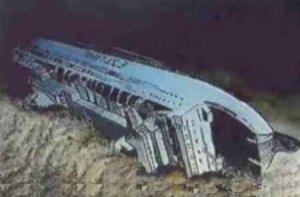Sinking of the MS Estonia
 | |
| Date | 28 September 1994 |
| Deaths | 853 |
| Interest of | Christopher Bollyn, Lars Borgnäs, Graham Phillips, Jutta Rabe |
Chris Bollyn believes that this was not an accident. He has observed that it happened the day after a remarkably similar terrorist drill the day before, and believes that this was a false flag attack.[1]
Contents
Official narrative
A tragic accident, due to a combination of factors, including uneven loading of cargo.
Response
The Swedish government at first promised to raise the wreck and to spare no cost in finding the cause of the disaster. But then it changed its mind, refusing all pleas from the bereaved relatives to bring the Estonia to the surface, although it sank in shallow waters.[2]
Alternative evidence
Stephen Davis wrote in 2005 for the New Statesman that "this man, a retired MI6 officer whom I have known for many years, told me that the sinking of the Estonia was not an accident and that Britain and the Baltic nations had good reason to want the wreck buried" and that "tests at laboratories in the US and Germany showed signs of an explosion on the ferry's hull."[2]
Related Document
| Title | Type | Publication date | Author(s) | Description |
|---|---|---|---|---|
| Document:Estonia: Sunk due to n-cargo? | Article | 17 May 1996 | Maarten Rabaey | A summary of an article from the Belgian reporter Maarten Rabaey in the De Morgen newspaper from 27 April 1996 about details of the sinking of the ship, the so-called 'Felix Report' and the reasoning behind the almost immediate sealing of the wreck in a sarcophagus. Archive of this article here and here |
Rating
Of note, this is the first time in my life I heard that something is the work of intelligence... as a boy when it just happened, from people on the street talking about it.